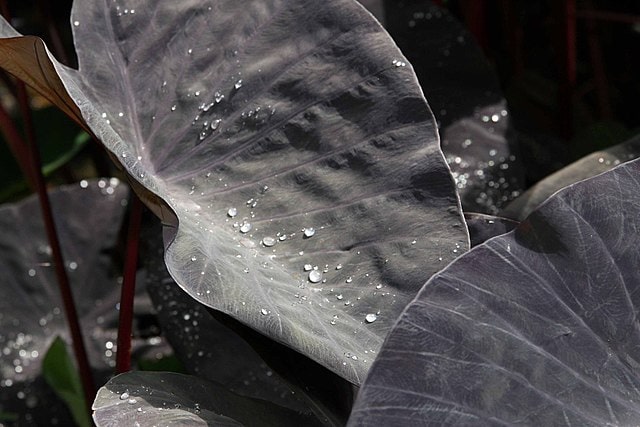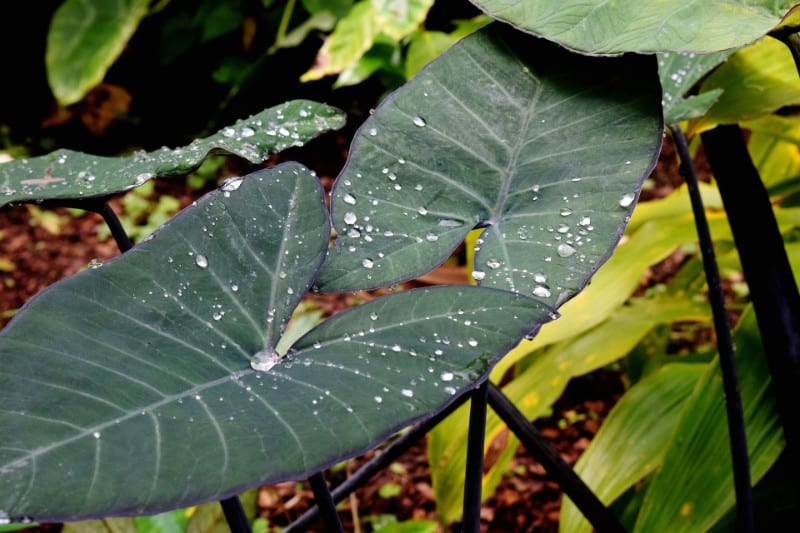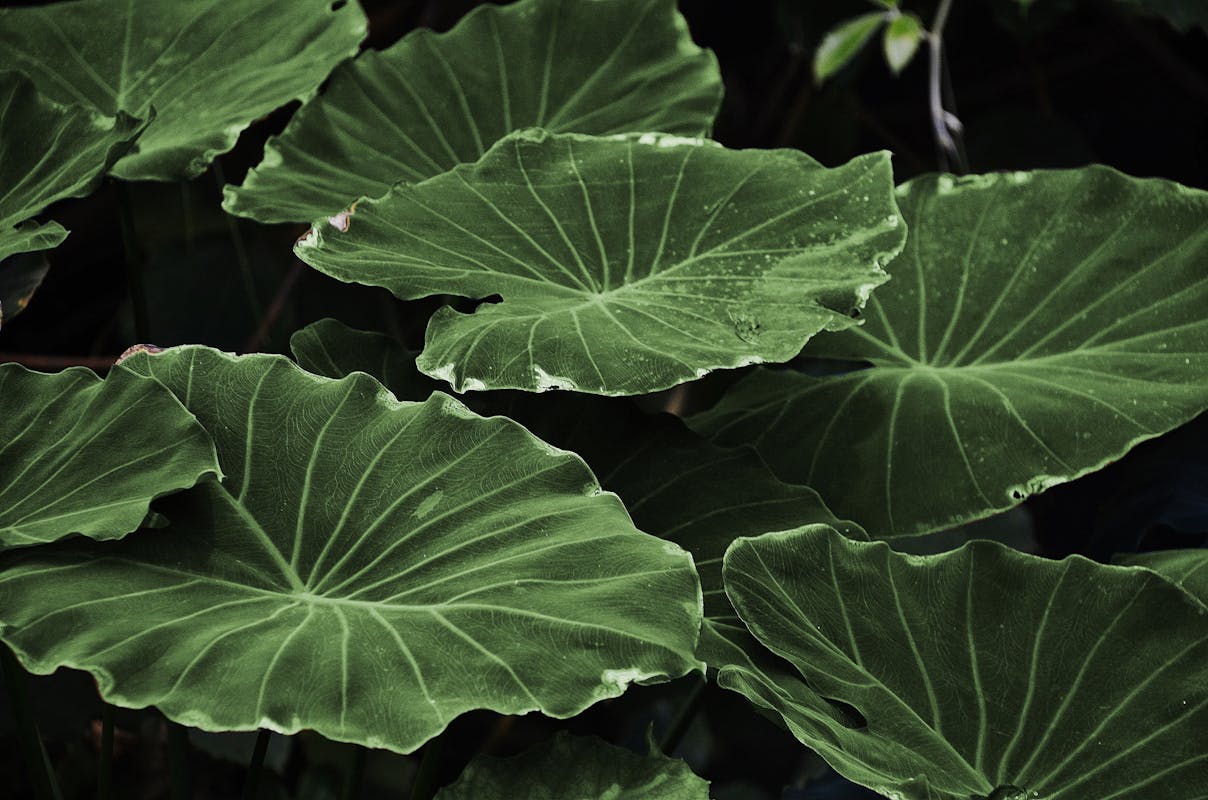This guide will walk you through the process of propagating Elephant Ears, ensuring you achieve lush, healthy plants.
Understanding Elephant Ears

Before you start propagating, it’s helpful to understand what Elephant Ears are. These plants are characterized by their large, heart-shaped leaves that come in various shades of green and can grow several feet, depending on the species. They thrive in warm, humid environments and prefer moist, well-draining soil. Common varieties include Colocasia esculenta, commonly known as taro, and Alocasia amazonica, famous for its stunning dark green leaves with contrasting silver veins.
Best Time to Propagate
The ideal time to propagate Elephant Ears is during the spring or early summer when the plants are actively growing. Propagation during this time encourages quicker root development and healthier growth. If you live in a colder climate, ensure that you wait until all danger of frost has passed.
Methods of Propagation
There are several methods to propagate Elephant Ears, including division, offsets, and stem cuttings. Below, we will go over each method in detail.
1. Division
Division is the most common method to propagate Elephant Ears. This involves separating the rhizomes (the underground stems) of the plant.
Step-by-Step Guide to Division:
Select a Mature Plant: Choose a healthy plant with multiple stems.
Prepare Your Tools: Use a sharp, clean spade or garden knife, gloves, and a shallow tray or bucket for the divided sections.
Dig Up the Plant: Carefully dig around the base of the plant to expose the rhizomes. Take care not to damage them during the process.
Separate the Rhizomes: Identify natural separation points and gently pull or cut the rhizomes apart, ensuring each division has at least one healthy growth bud (or “eye”).
Replant: Replant the divisions immediately into prepared pots with fresh potting soil, burying the rhizome shallowly. Water it well and place it in a warm, shaded spot to recover.
2. Offsets
Elephant Ears often produce offsets, which are small plants that grow alongside the main plant. These can be easily removed and replanted.
Steps for Offsets:
Identify Offsets: Look for small plants at the base of the main plant.
Remove Offsets: Use your fingers or a small tool to gently uproot the offset, making sure it has roots attached.
Replant: Plant the offsets in their own pots filled with a well-draining potting mix. Water them thoroughly and provide indirect light.
3. Stem Cuttings
While less common, stem cuttings can also be used for propagating certain varieties of Elephant Ears. This method is best used for Alocasia species.
Process for Stem Cuttings:
Select a Healthy Stem: Choose a healthy stem with at least one leaf node (where leaves attach).
Make the Cutting: Use a sharp, sterile knife to cut the stem just below the node. Aim for a length of about 6 to 8 inches.
Prepare the Cutting: Remove the bottom leaves, leaving only a couple of leaves at the top.
Rooting: Place the cutting in a glass of water, ensuring that the node is submerged while the leaves remain above water. Alternatively, plant it in a pot with moist potting soil.
Transplant: Once roots have formed (usually in a few weeks), transplant the cutting into a larger pot or garden bed.
Caring for Propagated Plants

After propagating your Elephant Ears, proper care is crucial for their successful establishment:
Watering: Keep the soil consistently moist but avoid overwatering, which can lead to root rot. A good rule of thumb is to water when the top inch of soil feels dry.
Light: Provide bright, indirect light. Direct sunlight can scorch the leaves.
Humidity: Elephant Ears thrive in humid conditions. If you’re growing them indoors, consider misting the leaves or using a humidity tray.
Fertilizing: After a few weeks of establishment, use a balanced liquid fertilizer every 4-6 weeks to encourage healthy growth.
Common Challenges
While propagating Elephant Ears can be straightforward, gardeners may face a few challenges:
Pest Issues: Keep an eye out for common pests like spider mites and aphids. Regular inspections and maintaining proper humidity levels can help prevent infestations. If pests are found, you can treat them with insecticidal soap or neem oil.
Overwatering: One of the most common struggles with Elephant Ears is overwatering, which leads to root rot. Ensure pots have adequate drainage and allow the top inch of soil to dry out between waterings.
Lighting Issues: Insufficient light can cause stunted growth and poor leaf development. If your plant appears leggy or has yellowing leaves, consider moving it to a brighter location.
Success Tips for Propagation
To ensure your propagation efforts yield vibrant, healthy plants, keep the following tips in mind:
Clean Tools: Always use clean and sterile tools to prevent the spread of disease to your plants.
Monitor Growth: After planting your divisions, offsets, or cuttings, monitor them closely for signs of new growth, which indicates successful propagation.
Patience is Key: Some plants may take longer to establish than others. It’s essential to be patient and give them ample time to root and grow.
Conclusion
Propagating Elephant Ears can be a fulfilling process that not only enhances your garden or indoor space but also allows you to share these beautiful plants with others. By following the methods outlined in this guide—division, offsets, and stem cuttings—you can expand your collection and enjoy the lush, tropical aesthetic that Elephant Ears bring.
Whether you’re a novice gardener or an experienced green thumb, the satisfaction of watching your propagated plants grow is unmatched. So gather your gardening tools, get ready to propagate, and soon you’ll be surrounded by more of these stunning foliage giants! Happy gardening, and may your Elephant Ears flourish!
Share Your Thoughts!
Have you successfully propagated Elephant Ears? What methods did you use? Share your experiences in the comments on Pinterest! We’d love to hear about your journey with these striking plants. Don’t forget to follow for more gardening tips and tricks!





